Dolphins are warm-blooded animals and belong to a group of mammals known as cetaceans. This means that they can regulate their body temperature independently of the temperature of their environment. Unlike cold-blooded animals, dolphins have a high metabolic rate, which allows them to produce and maintain their body heat.
This article will describe each point in detail. So, read the article thoroughly.
How Do Dolphins Regulate Their Body Temperature?
Dolphins have many ways to regulate their body temperature in cold oceanic waters. Firstly, they have a thick layer of insulating fat known as blubber. The blubber helps keep the dolphin’s vital organs warm by creating a barrier against the cold water and trapping heat close to their body.
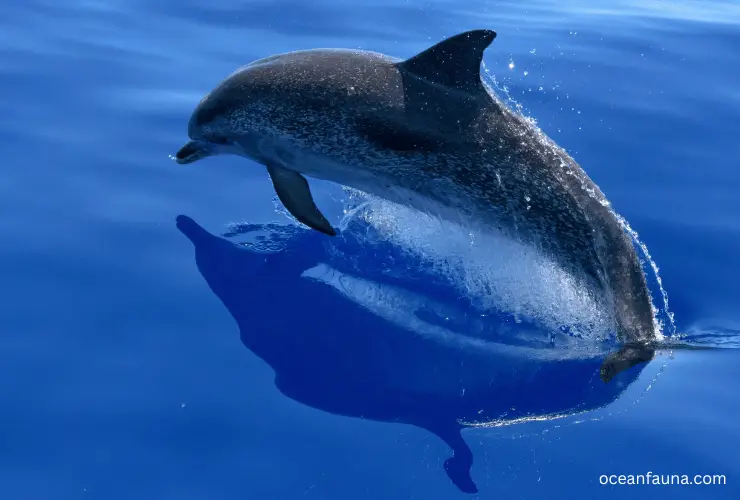
The thickness of the blubber is not the only factor that determines how well it can insulate. The lipid concentration of the blubber is also important, with a higher concentration leading to better insulation.
In addition to their protective coating of blubber, dolphins are able to regulate their body temperature through their metabolism. They are able to increase their metabolic rate, allowing them to burn more calories and transfer more heat throughout their body. This includes redistributing heat from the blood, vital organs, and muscles so that no area becomes too hot or cold for optimal functioning.
Furthermore, dolphins also have an efficient counter current heat exchange system in place which helps maintain an optimum body temperature. This involves having arteries and veins running close together, where warm arterial blood supplies warmth to colder venous blood returning from the extremities before it reaches the rest of the body. This helps limit any significant drops in core temperature, which could be dangerous for the dolphin’s health.
Dolphins are also able to use behavioral thermoregulation to stay comfortable in cold waters. This includes using insulating behaviors such as huddling together and moving slowly when temperatures get too low or performing activities such as jumping out of water when temperatures rise too high for comfort.
All these adaptations working together help ensure that dolphins can stay safe and healthy despite facing extreme temperatures in ocean environments!
Like many warm-blooded animals, dolphins may also experience involuntary shivering in cold environments, which helps generate heat and keep them warm.
The sun is also essential in regulating the body temperature of dolphins. When they come up to breathe, its rays warm their bodies, particularly for those living in colder regions where it helps them preserve a desirable warmth despite icy surroundings. On top of that, the sun’s heat can also increase water temperatures around them, providing comfort and relief.
Additionally, when dolphins swim close to the surface of the water, they can absorb the sun’s rays, which can help warm their bodies.
What Is the Importance of Being Warm-blooded For Dolphins?
Being warm-blooded, dolphins can swim in a wide range of temperatures and environments. It also enables them to be highly active and perform complex hunting and social behaviors.
Warm-bloodedness also helps dolphins to cope with extreme weather conditions and maintain their health and fitness. For example, the blubber and internal metabolic system work together in cold water to keep the dolphin warm and prevent hypothermia.
What Sets Dolphins Apart from Cold-Blooded Animals?
Not like other aquatic creatures, such as fish and amphibians, dolphins are warm-blooded mammals that thrive in the ocean. Cold-blooded animals do not require much body fat or blubber, as their body can adjust to the temperature of their environment without needing to produce heat. In contrast, warm-blooded animals, such as dolphins, require significant amounts of calories to maintain their body heat and keep themselves healthy.
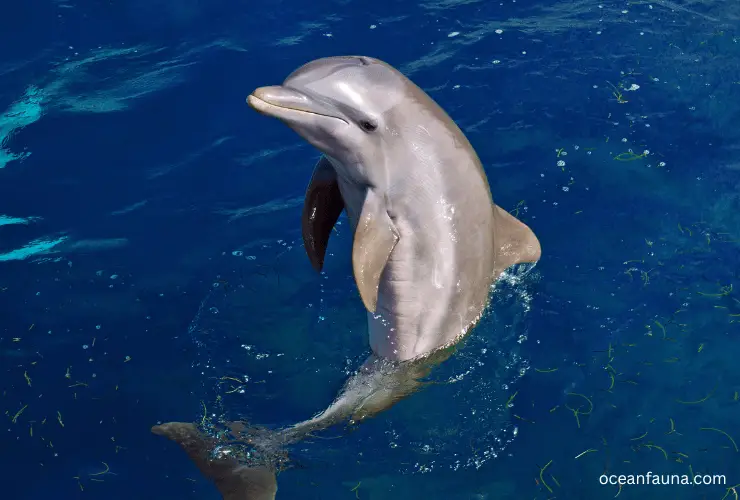
Another difference between them is the way they give birth to their young. Most mammals, including dolphins, give birth to live young, while many fish and amphibians lay eggs.
The way in which young animals are raised and nurtured can also differ between warm-blooded and cold-blooded species, with many mammals providing care and protection for their offspring, while young cold-blooded animals are often left to fend for themselves.
How Are Dolphins Warm-Blooded?
Dolphins are warm-blooded animals, meaning they can maintain a stable body temperature despite changes in their environment. This is a characteristic of all mammals, including humans and other land-dwelling mammals.
Warm-blooded animals are called endothermic, which means they generate heat internally. In contrast, cold-blooded animals are called ectothermic and regulate their body temperature by adjusting to environmental changes.
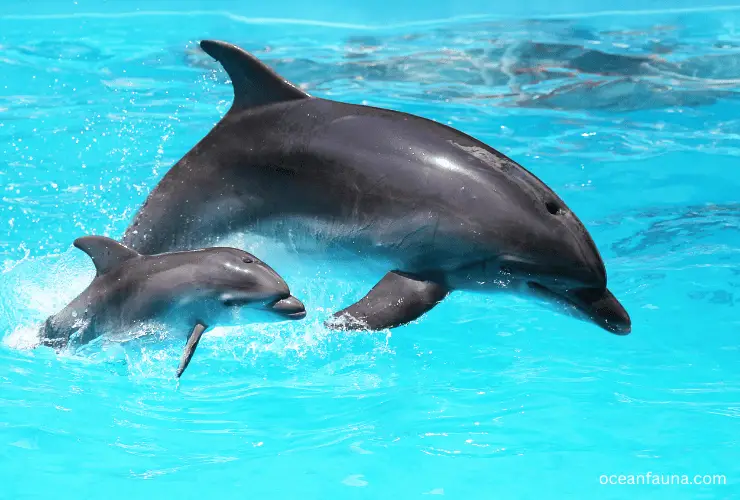
One of the keyways that dolphins are able to maintain their body temperature is through the production of heat by metabolic processes.
The dolphin’s metabolism generates heat that is then distributed throughout the body, keeping the internal temperature stable. This allows the dolphin to function normally in a range of environments, from warm tropical waters to cold Arctic waters.
Why Are Dolphins Warm-blooded?
Dolphins are warm-blooded because of the evolutionary adaptation they have developed to survive in a wide range of temperatures. Warm-bloodedness, or homeothermy, is an ability that enables dolphins to maintain their body temperature despite fluctuations in their environment. This allows them to live in both warm tropical and cold Arctic waters while staying active and hunting at any time of day or night.
Being warm-blooded gives dolphins the advantage of having a higher metabolism than cold-blooded animals, which provides them with enough energy for swimming, hunting, and communicating. Additionally, it helps keep their vital organs warm and functioning properly.
Developing this homeothermy adaptation was critical for dolphins’ ability to survive in different habitats with varying temperatures around the world. To achieve this feat, dolphins evolved certain physiological traits, such as having thick layers of insulating blubber that can trap heat from their environment and prevent heat loss from the body surface.
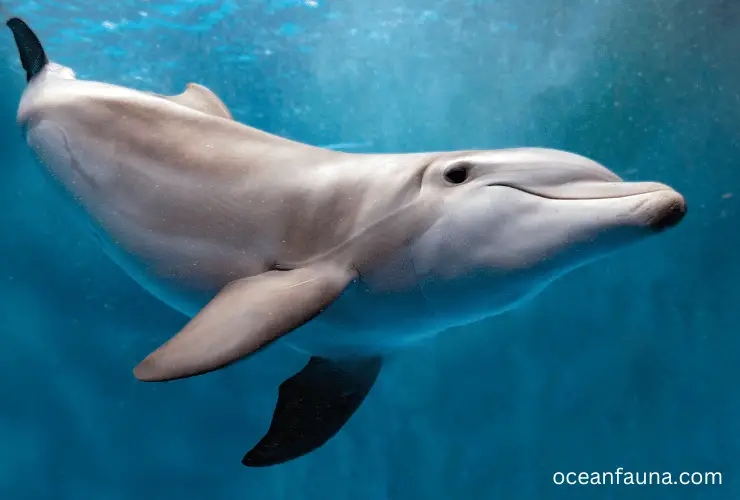
They also have counter current exchangers located near their flippers which helps regulate temperatures between their warmer core and cooler extremities. Dolphins are able to adjust blood flow to different parts of their bodies depending on the temperatures at hand.
If it’s colder outside, it will send more blood toward the skin’s surface so it can be warmed by the environment while slowing down circulation toward its core in order to retain this heat.
Alternatively, if it’s warmer outside, it will reduce blood flow near its skin while increasing circulation near its core so that it can cool down accordingly.
Furthermore, dolphins possess several other adaptations that allow them to regulate body temperature efficiently, such as specialized noses known as ‘vents’ that help channel cold air over their bodies when needed, large fins which help increase the surface area exposed during basking in sunlight, and even a special network of veins running beneath their skin that acts like a radiator system allowing them to expel excess heat whenever required.
All these features combined make them well adapted for surviving changing climates and give them the remarkable ability to remain active at any time, regardless of environmental conditions – something many other creatures cannot do.
What Water Temperature Do Dolphins Prefer?
Studies have shown that saltwater bottlenose dolphins prefer to inhabit water that is between 50° and 90° Fahrenheit (10° to 32°C). However, they are quite adaptable creatures and can be found in a variety of environments around the world, from tropical waters to temperate regions.
Though generally, they try to avoid oceans near the Arctic and Antarctic, where the ocean temperatures dip far below their preferred range. While other species of dolphins may favor slightly different temperatures, such as Pacific white-sided dolphins, which regularly migrate between cooler and warmer waters, most tend to stay within similar temperature ranges due to their warm-bloodedness and need for a balanced habitat.
Can Dolphins Stay Warm in The Cold Water?
Yes, dolphins can stay warm in cold water. As I discussed above, one of the ways that dolphins maintain their body temperature is through their thick layer of blubber. It is a layer of insulating fat that covers their vital organs, helping to keep them warm in cold water.

The blubber layer’s thickness is a major factor in keeping the dolphin snug, yet the lipid concentration must be noticed. Increased lipids offer better insulation against the cold, so even if one has a thin fat covering but higher concentrations of lipids, they may stay warmer than another with thicker blubber but less lipid content.
Another factor that helps dolphins stay warm in cold water is their ability to increase their metabolic rate. This increases the number of calories the dolphin burns, producing heat and transferring it throughout its body, vital organs, and muscles.
Just like humans, dolphins may also shiver involuntarily when in a cold environment, which helps keep them warm by burning calories and creating friction.
FAQs
What is Cold Bloodedness?
All living creatures require a precise balance of temperature to survive, but cold-blooded animals are the only species that cannot generate their own body heat.
Poikilothermy is the scientific name for this phenomenon. It enables certain reptiles, such as snakes and lizards, to regulate their body temperature by absorbing energy from external sources like sunlight or water. Cold-bloodedness is an amazing adaptation that allows these creatures to thrive in various climates!
What is Warm Bloodedness?
Homeothermy, or warm-bloodedness, is the capacity of an animal to keep its body temperature in balance regardless of the external environment. Mammals and birds are warm-blooded creatures that possess a metabolic process for generating heat energy and regulating their internal temperatures.
What are warm-blooded marine mammals?
Whales, dolphins, and porpoises are all warm-blooded marine mammals. This means that they are able to regulate their body temperature regardless of the temperature of their environment. Unlike cold-blooded animals, warm-blooded animals have a high metabolic rate, which allows them to produce and maintain their body heat.
Conclusion
In conclusion, dolphins are marine mammals with warm blood and are part of cetaceans. They have a very thick layer of blubber that keeps them warm and the ability to speed up their metabolism, both of which help them control their body temperature and keep their heat inside.
Dolphins are different from other marine animals like fish and amphibians because they are warm-blooded and have different ways of surviving in their environments than dolphins do.

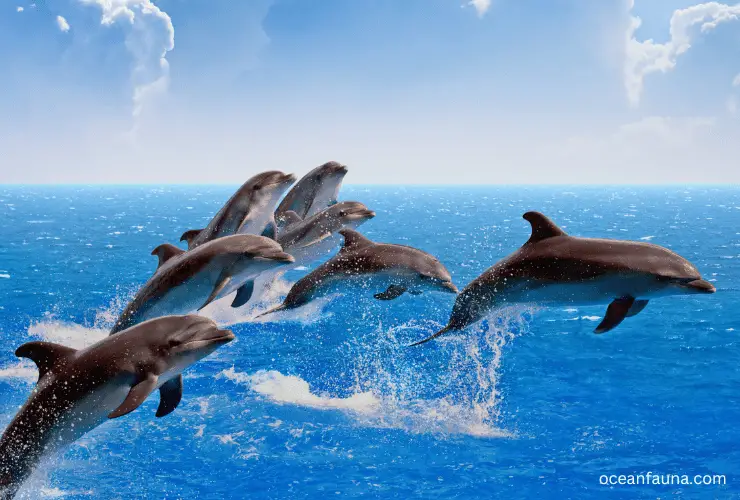
3 thoughts on “Are Dolphins Cold Blooded? [Facts Explained]”